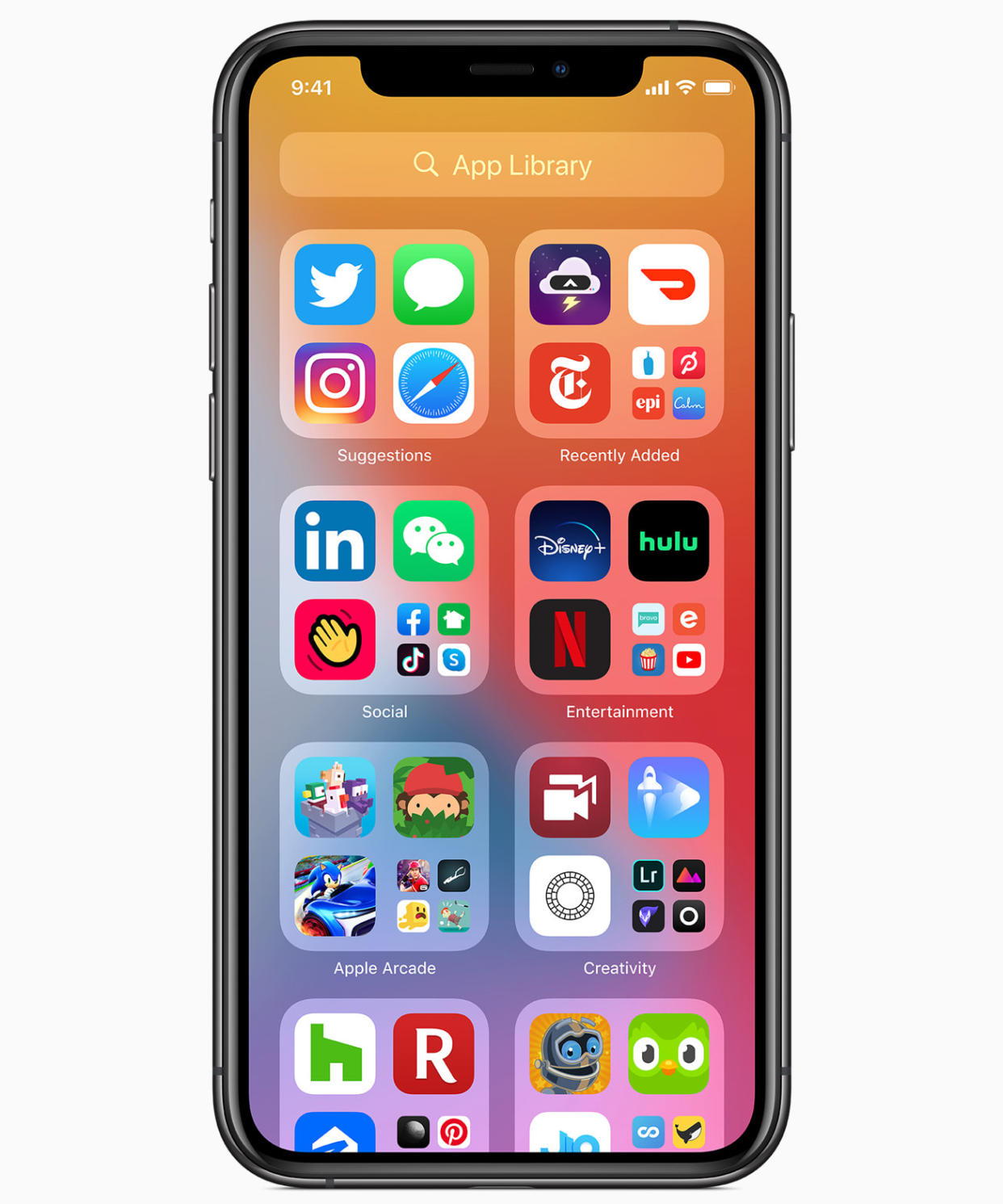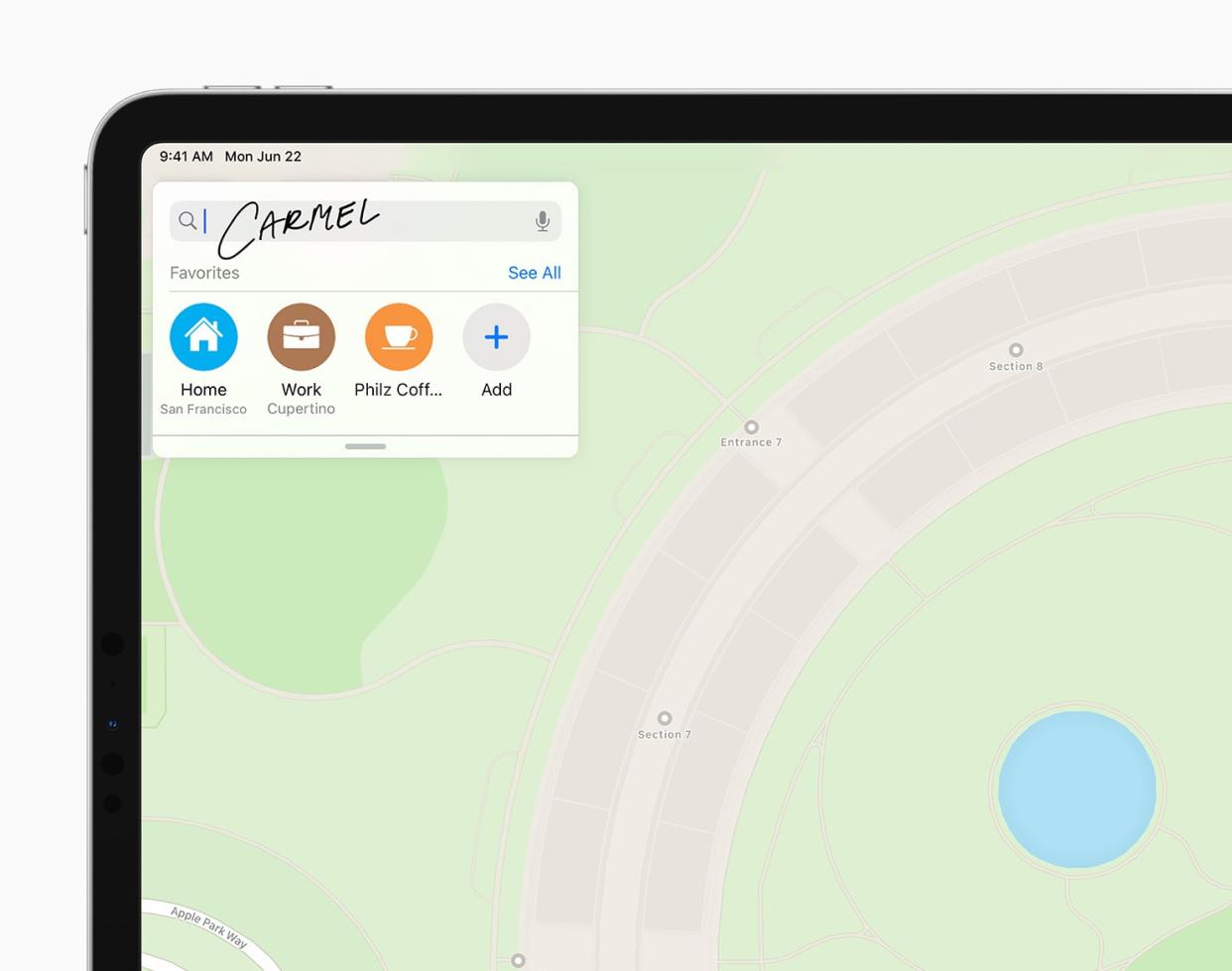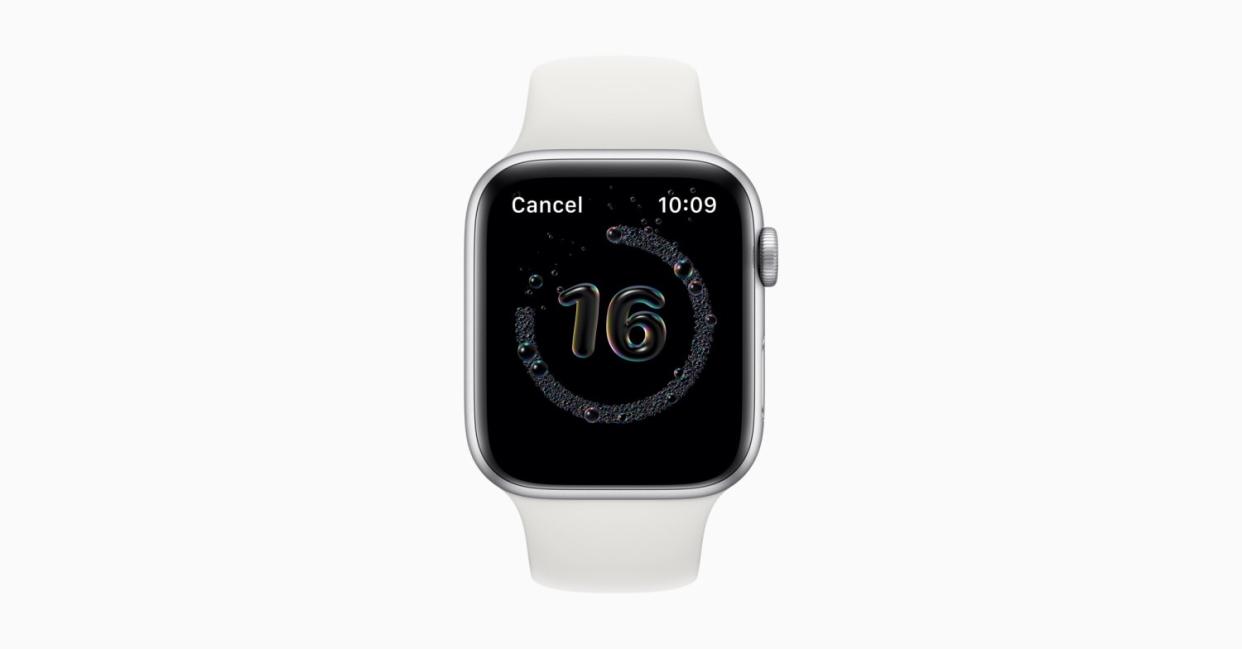Apple WWDC: iOS 14, ditching Intel and more
Apple's developer conference started on Monday afternoon. It's announcing a bunch of new software, including the latest version of iOS, the iPhone operating system.
Apple also announced that future Mac computers will use its own chips. Previously, Mac computers used Intel chips. Apple said the transition would enable the company to offer faster performance on its laptops and desktops.
Apple CEO Tim Cook started the event in a pre-recorded video from Apple's campus by addressing racism and the COVID-19 pandemic. He mentioned Apple's $100 million program to fight racial injustice and noted that the company is holding the conference during a global public health event.
"We're committed to being a force for change," Cook said.
Here's what has happened so far:
iOS 14
The latest version of the iPhone operating system includes a big change to the iOS home screen, including the ability to set default email and browser apps for the first time.
In iOS 14, users can pin widgets with updating information on the home screen, Apple said on Monday, including calendar and maps mini-programs. Previously, users could only include apps on an iPhone's home screen. Users can drag a widget onto the iPhone home screen, where it will persist. Users can download new widgets from a widget gallery. Apple has also introduced a widget that uses artificial intelligence to predict which data the user wants to see.

Apple also introduced a new feature called "App Library" that automatically organizes apps. Users can also delete entire pages of apps in one tap as well.
Apple also added several new features to the Messages app, including mentions, new Memoji features including an avatar wearing a face mask, and a new interface for group texts that enables threads to be pinned to the top of the app.
iOS 14 also introduces a picture-in-picture feature that enables a video to float on top of other apps while watching video.
The update also includes a redesign of the Siri interface. Siri has 20 times more facts than a few years ago, Apple said.
Guides from partners, including Zagat, will be included inside Apple's Maps app, which adds content about restaurants or attractions into the app. Apple will also add cycling maps in certain cities including New York and San Francisco.
Incoming calls can also be displayed as a banner notification for the first time, Apple said.
If an app is using an iPhone's camera or microphone, Apple has introduced a new notification to inform the user.
Apple ditches Intel for its own chips
Future Macs will use Apple-designed chips, Apple said. Apple previously used Intel chips on Mac laptops and desktops. Cook said it was a "huge leap forward." Apple said it was designing its own chips specifically for the Mac to provide more performance while using less power.
Apple currently uses its own chips on its iPhones, iPads, Apple Watches, and Apple TVs, and said it had shipped over 2 billion chips so far.
Apple emphasized that one of the reasons it is making the change is to get more performance while using less power. The transition will require software makers to update their software for compatibility. Apple said it built its own Big Sur apps to run "natively" on the new chips.
Apple says that developers can get their new apps running in a "couple of days" and that there is a number of new software features that enable developers to easily port their apps. Apple said that Microsoft and Adobe are already updating their software, including Photoshop and Excel, to run on the new Macs.
"Everything developers need to build apps for these new chips is included in Xcode,'" Apple software SVP Craig Federighi said.
Users will be able to use apps that haven't been updated through a new feature called Rosetta, which will provide backwards compatibility with Intel-based features. It will also support "virtual machines" that enable software makers to run Linux as an app inside MacOS.
Apple's own professional apps, including Final Cut Pro, are already compatible with the new Apple chips, Apple said.
Translate app
Apple has also introduced a new translation app, called Translate, that enables real-time translation between two different languages.
An iPhone with the Translate app can be put in between two people speaking different languages and can translate what they are saying in real time.
Apple CarPlay and digital car keys
Apple announced new updates to CarPlay, its software that enables an iPhone to pair with a supported head unit so users can control their iPhone while driving.
The biggest update is digital car keys in iOS 14 and iOS 13, which enables users to unlock and start their car from their phone. The first supported car is the 2021 BMW 5-series, which will be released next month, Apple said.
The keys can be shared through an iMessage, and users can deactivate keys remotely through iCloud.
Apple said it was working on standards with industry groups to bring the feature to more cars, and expects to see a new standard using Apple's ultra-wideband chip next year.
App Store and App Clips
Apple introduced a new lightweight form of software it calls App Clips that can be launched through the web or a text messages. App Clips are less than 10 megabytes in size.
Users can also scan a QR-code like image to pull up an App Clip at participating business. Users can sign into an App Clip using Apple's sign-in method and pay through Apple Pay.
Apple introduced a new "nutrition label" for apps that summarizes an app's privacy policy. It will be displayed on App Store pages, Apple said.
Apple said that 200 million accounts had been created using Apple's Sign In With Apple feature introduced last fall that allows users to sign into web services using an Apple account.
iPad OS 14
Many Apple-developed iPad apps, including Photos, Music and Notes, have gotten iPad user interface updates with side bars and tool bars, Apple said on Monday.
Apple's Siri feature is now included in a little button on the bottom right corner in the newest version of iOS 14. Apple also redesigned its search feature to look more like the search function on a Mac desktop.

The new universal search can be used launch apps, search the web, or find contacts, Apple said.
Apple announced new improvements to its iPad stylus, called Pencil. The Pencil can now be used to input text all over the iPad user interface, a feature Apple calls Scribble. For example, users can write directly in the Safari URL bar, which is automatically converted into text. If users scratch something out using the Pencil, it will be deleted.
AirPods
Apple said that its wireless earbuds, AirPods, will now automatically switch from your iPhone to your computer when needed.
AirPods Pro will also support virtual surround sound, like at a movie theater, by measuring whether your head or device is moving.
Apple Watch
The latest version of the Apple Watch software can track user sleep patterns using a machine learning model that senses motion at night. It includes a feature to nudge users to go to bed and new alarm features to gently wake users up.
Sleep data will be graphed and analyzed inside the Apple Health app.

Apple also added several new "complications" to its Apple Watch software, which enable features to be displayed directly on a watch's interface. Apple renamed its Workout watch app to Fitness, and added dancing as a new workout feature.
The newest version of Apple Watch software will enable users to share their watch face. Developers can offer preconfigured faces with their apps.
The Apple Watch also includes a hand washing timer for the first time.
Apple HomeKit and Apple TV
The Home app now supports face recognition for home cameras using the facial recognition data inside a user's photo app.
Apple has redesigned its Home app that controls smart home accessories like smart bulbs, smart locks, and cameras. It includes a new adaptive lighting feature that automatically controls the color and warmth of lighting inside the home.
Apple's set-top box, the Apple TV, can be used as a Home hub. It's getting a software update including multiple-user support and additional controller support for games. The latest version of the Apple TV can also display picture-in-picture, if you need to, for example, monitor financial news while watching a workout video.
MacOS Big Sur
Aside from the technology transition, Big Sur includes new system sounds, a redesigned notification center, and additional widget features.
The new notification center can be accessed by clicking on the time in the upper right corner, which includes widgets and toggles for sound, brightness, and wireless connectivity.
Apple also updated its Messages app to add features to mirror the new iPhone version, including pinned threads and messages search.
Last year, Apple introduced Catalyst, a new software that enables app makers to more easily port iPhone and iPad apps to the Mac. It got several improvements this year, Apple said, including the ability to write an app that takes over the full Mac desktop.
Apple will also offer a marketplace for Safari extensions as part of the Mac App Store. Safari's start page and tabs have also been redesigned, and it can translate websites automatically.
The newest version of Safari will also display a privacy report for websites including which trackers are running.
"We love the Mac, it's the tool we use to make all the products we put out into the world," Apple designer Alan Dye said in a videotaped demo.
